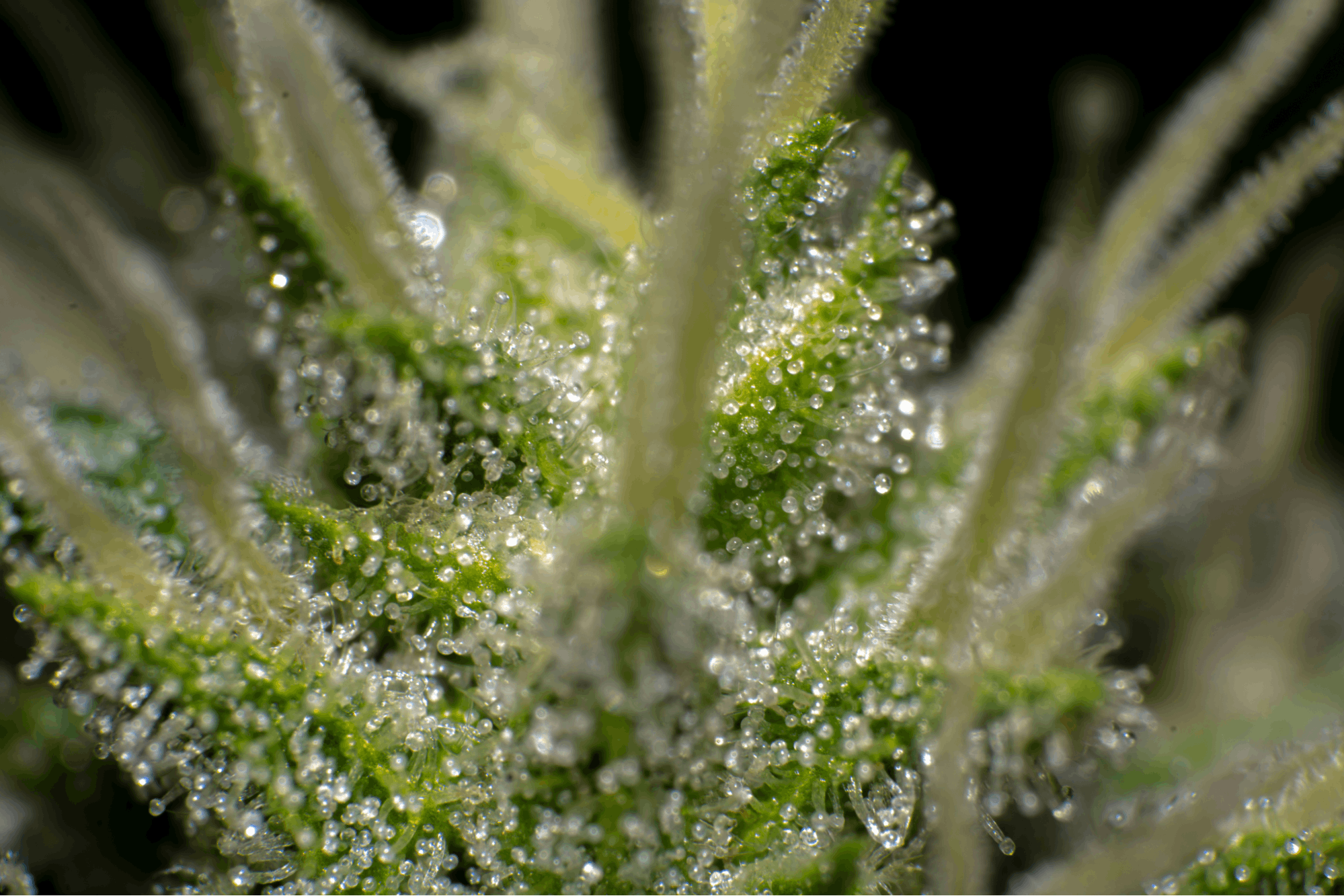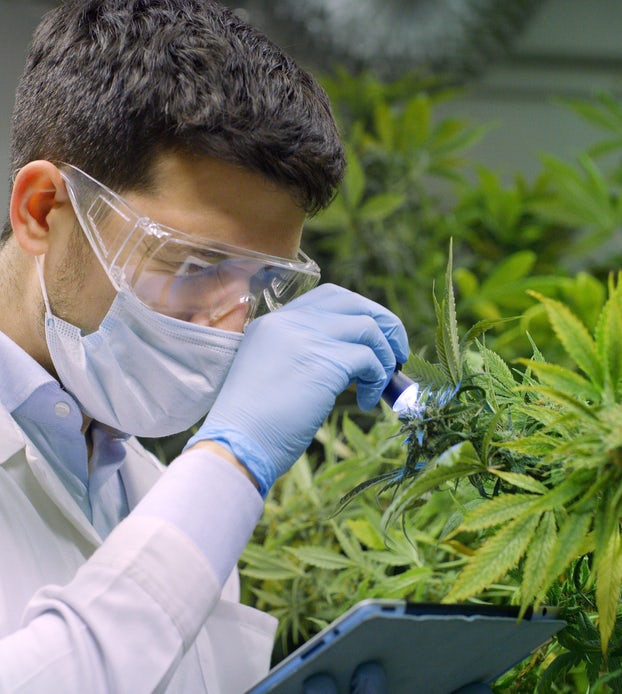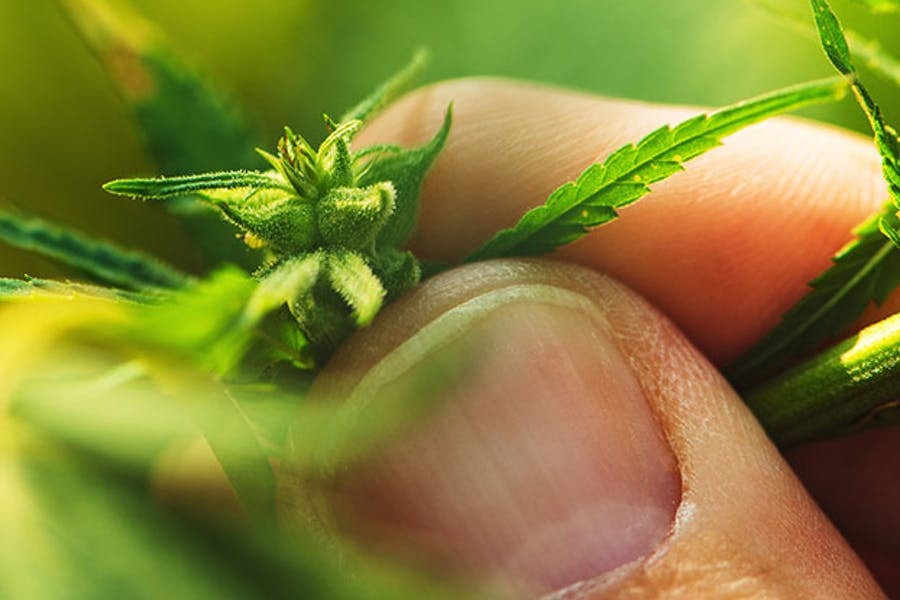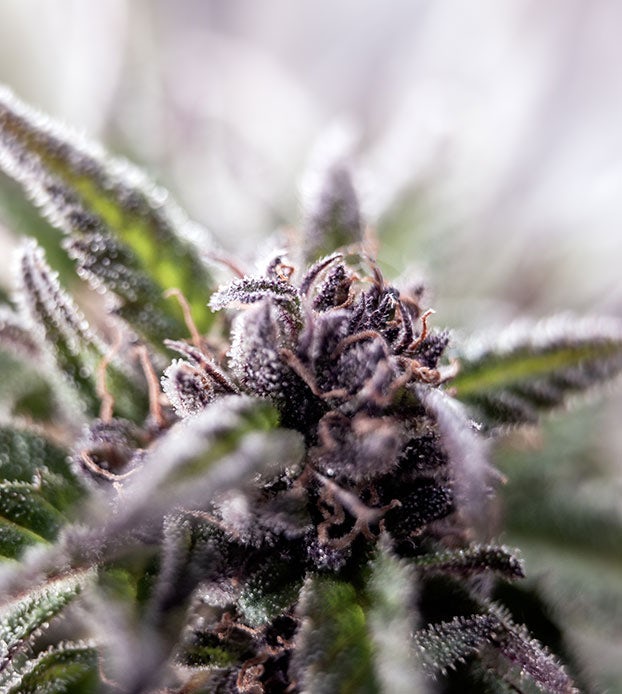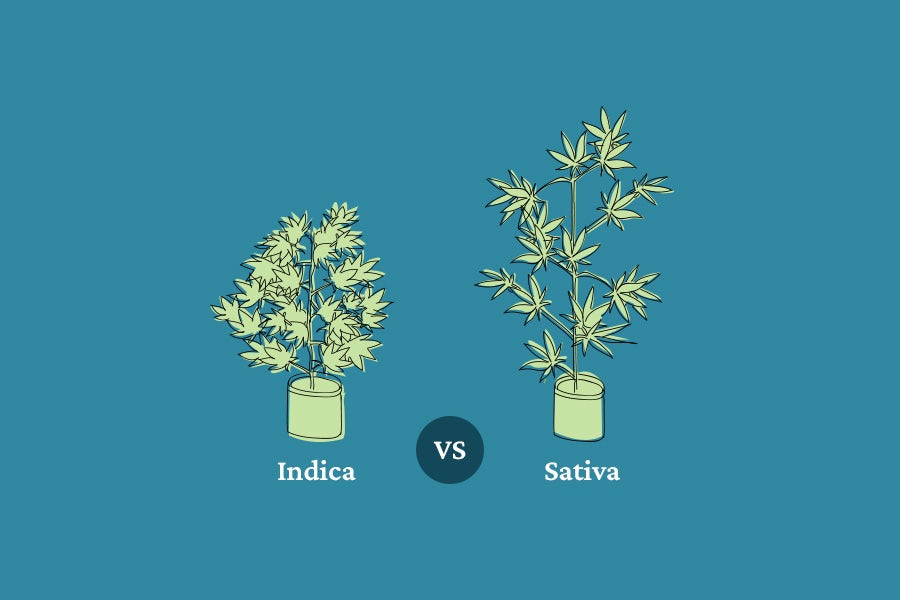In the wee hours of 2019, a team of Italian researchers reported on an astounding discovery; a new cannabinoid was found for the very first time in the cannabis plant – THCP.
Tetrahydrocannabiphorol (THCP) is a naturally occurring cannabinoid that was first found (in very small amounts) in a strain of Italian medical cannabis known as FM2. This THC-like cannabinoid was tested in rodents and found to be at least twice as potent as THC, with some laboratory tests suggesting as much as 30 times greater attraction to the CB1 receptor when compared to THC. This means that, milligram for milligram, THCP will pack a more powerful punch than THC, but that may also come with more risks of adverse effects comparatively. 1
What are the effects of THCP?
When it comes to understanding the effects of THCP, it is important to recognize how this molecule differs from other well-known cannabinoids. CBD, CBG, and THC all share a similar chemical structure, and in particular they share a specific side-chain known as the “C3 alkyl side chain.” The name of this side-chain is not important, but its length is extremely important, as the difference between THCP and THC is the length of this chain. While the more familiar cannabinoids like THC have a 5-carbon long side chain, THCP is known to have a 7-carbon long chain. 2
THCP’s side chain is what gives it potent activity at the CB1 and CB2 receptors of the endocannabinoid system (ECS). The “P” in THCP doesn’t stand for potent, but instead stands for “phorol”, which infers the 7-carbon long chain in chemist language.
THCP is just one example of the importance of the side chain length. Another prime example of the importance of this side chain is THCV (tetrahydrocannabivarin). Here, the “V” stands for varin, and the side chain is only 3 carbons long. And similar to the above, this change in side chain length directly relates to the differences in pharmacology. Instead of being more potent at the CB1 receptor like THCP, the THCV molecule can actually block the receptor instead of activating it. This means that instead of producing THC-like effects, THCV may actually reduce the effects of THC–at least at lower doses. 3
Is THCP legal?
As is too often the case with cannabis in the US, the response is almost always “it depends.” While THC is either clearly legal in a state or country based on its marijauna laws, THCP’s legality depends more on where it comes from. According to most interpretations of the 2018 Farm Bill, THCP falls into a legal gray area as long as it’s hemp derived, since it is not explicitly listed in the controlled substance act.
Where does THCP come from?
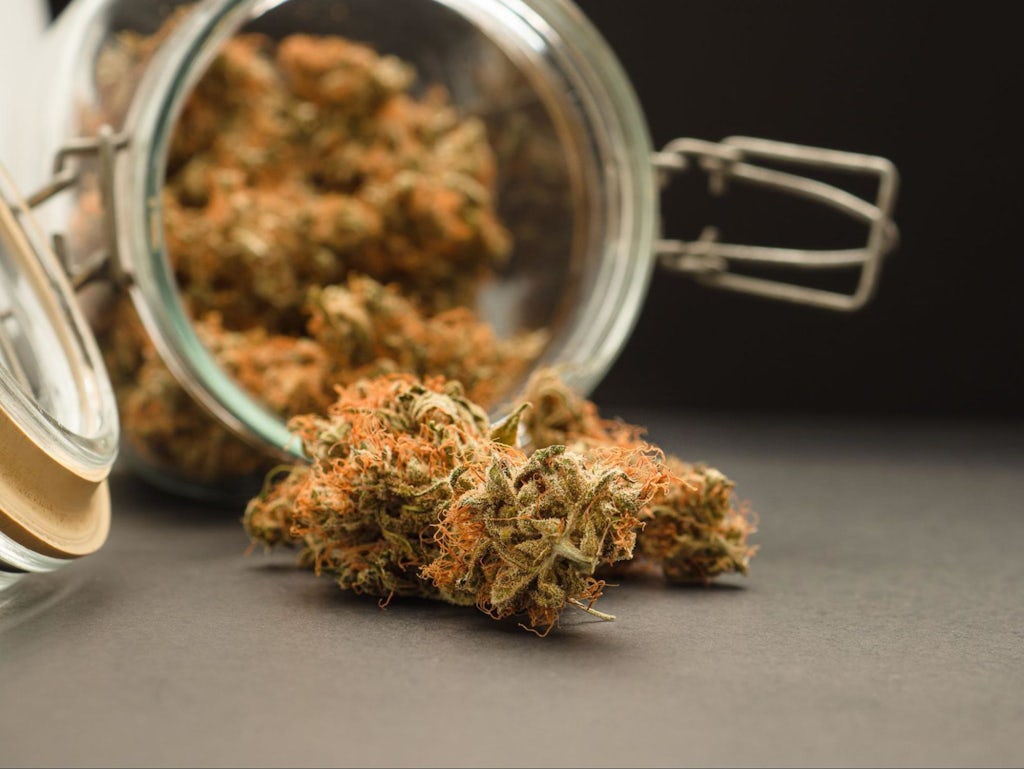
There are a lot of similarities between THC and THCP. The genesis of the natural cannabinoid is just like THC – produced from CBGA. Except with the longer chain of THCP, the precursor molecule is called CBGPA, which can be converted in the plant to cannabinoids like CBDP or THCP. However, this only happens in exceedingly small amounts in all plants that have been tested so far. 4
How exactly the THCP on the market is being produced isn’t clear to the purchaser, but you can be sure that it is not coming from high-THCP strains. To date there are no cannabis strains that are naturally high in THCP, so any flower being sold as high-THCP flower is either false advertising or has been coated with cannabinoids after harvest.
The THCP products available on the US market today are not coming from plants, but rather being produced synthetically in a lab. Unlike how delta-8 THC is produced, which is usually by chemical conversion from CBD extracted from hemp plants, the chemical precursors (the “parents”) of THCP likely don’t come from hemp or marijuana at all. Rather, chemists are using biochemical precursors to synthetically create the potent cannabinoid in a laboratory. There are no cannabis plants involved in the supply chain of these naturally occurring, synthetically derived cannabinoids like THCP. This circumstance makes the THCP available today more comparable to pharmaceutical drugs than full spectrum plant extracts.
The first edition of this article stated that the THCP products on the market were produced similarly to how most delta-8 THC is made from CBD. However, Chemist Dr. Mark Scialdone of BetterChem Consulting explains that the precursors used to produce THCP probably aren’t natural at all.
“THCP directly can be synthesized in a chemical reaction called a terpenylation of 5-heptyl resorcinol (the 7 carbon analog to 5-pentyl resorcinol aka olivetol) with an oxygenated derivative of limonene called PMD in processes described in the chemical literature vide infra.” Or, to put it simply, a long-chained THC precursor and a oxygen-containing terpene are two primary ingredients being used to produce synthetic THCP. 5
This isn’t to say that cannabis varieties don’t produce any THCP; in fact, advancing technologies are now showing us that THCP may be more common than previously thought.
In fact, a 2021 study funded by US-based MSO Vireo Health evaluated 13 samples from four strains and found THCP in all of them, but only in small amounts. The Italian researchers found just 0.0029% THCP in their samples, and the subsequent North American study found no more than 0.014% in any variety. US regulators consider 5mg as the standard unit of THC, so extrapolating on the highest THCP concentrations found, it would take 35 grams of cannabis (over 2 ounces) just to make a single 5mg dose of THCP.
What does THCP high feel like?
It’s never easy to describe a high, but the THCP high can best be described as powerful. THCP is strongly attracted to the CB1 receptor, the switch in your brain that is triggered by THC or THCP to the classic high experience. Early laboratory investigations suggest nearly 30 times more potency of THCP at CB1 when compared to THC, but experiments done on rodents by the same researchers suggest only about double the potency. 6
Considering how new this molecule is to science and new to the retail market, it’s hard to say for sure how much higher one could get off THCP compared to THC, but the pharmacologic studies done thus far suggest much higher. Additionally the majority of products found during an online search warn consumers of potent THC-like effects in products as low as 1mg of THCP, which is a fifth or even a tenth of the typical THC dose sold in retail stores.
Is THCP safe to use?
When it comes to the risks of consuming THCP, we know very little. No human research has ever been performed on this molecule. We know from animal studies that it acts on the endocannabinoid system’s CB1 and CB2 receptors very strongly, though the effects have never actually been researched in people.
Extrapolating on animal studies and other pharmacologic theories, it is likely that THCP will produce a powerful high, and it is quite possible that THCP could have more prominent side effects than THC itself. These could range from mild effects like dry eye and dry mouth to low blood pressure or even paranoia. Since the ECS is not concentrated in the part of the brain responsible for breathing, it is still highly unlikely that THCP could cause respiratory arrest and overdose deaths like opioids.
Delta-9 THCP vs Delta-8 THCP
Just as the plant only produces a single configuration of THCP, similar to the molecules delta-8 THC and delta-9 THC, the THCP cannabinoids can also come in closely related variations (isomers). These variations could potentially cause different effects and metabolize differently in and out of the body. The chemistry involved in producing THCP is likely to result in both delta-8 and delta-9 THCP, and it is possible many products on the market today actually contain both, as few labs can distinguish between the two.
The cannabis industry is inherently creative, and can move quite swiftly compared to policy and regulations. Despite THCP only first breaking into public conversation three years ago, there are already a multitude of THCP products available to online consumers today. Like much of the CBD/hemp market, THCP producers go mostly unregulated and quality control is a known, widespread problem in the industry.
Moreover, since THCP must be created synthetically, there are concerns around residual chemicals leftover in products, and also unintended byproducts created in the process that are not being properly screened for. These issues are not unique to THCP and apply to the vast majority of synthetically-derived cannabinoids.
THCP carts
Among the most common THCP products available are THCP vape cartridges. These carts should look no different than a typical delta-8 cartridge and will come in a similar vape pod or a 510-thread compatible with a standard battery. Because THCP cannot be extracted as a full plant extract, any cartridge will need terpenes added to the distillate. Be wary of picking products based on strain names, as there are no high-THCP strains. At best these strain names describe the specific cannabis terpene profile that has been added into the THCP distillate, at worst they are just catchy names and mean little-to-nothing about the contents of the vape.
THCP Gummies
Sweet treats exist even for new cannabinoids. Typically found around 1-3mg doses, THCP has got a reputation online for having strong THC-like effects even at such low doses. Just like THC edibles, expect a long-lasting experience – maybe even longer because of THCP’s high affinity for the CB1 receptor.
While there is no research specifically looking at THCP metabolism, given how other cannabinoids are metabolized, it is possible that there could be an even more psychoactive metabolite of THCP produced when it’s taken orally, similar to 11-hydroxy-THC.
THCP Flower
There is no such thing as high-THCP flower. Anything masquerading as high THCP weed is either false advertising or has been coated in cannabinoids. Expect any product like this to have very powerful effects, but don’t expect the seed you find in this product to grow into the same herb. In the future, strains with higher amounts of THCP strain seem possible, but could take a substantial amount of intentional breeding. 7
THCP Tinctures
Made the same way as any other THCP products, THCP tinctures can be a great way to be in precise control of your dosing. This can come in very handy when dealing with powerful molecules like THCP.
Bottom line: proceed with caution
To summarize, while there is some initial research to indicate that THCP is a stronger version of the THC we know and love, we don’t know much about its safety profile yet. There are also some serious quality concerns; with no high-THCP strains at this point all products on the market are hemp-derived. This makes them technically legal, but they fall under the same questionable regulatory standards as isololated or synthetic cannabinoid products such as delta-8 THC, HHC and THC-O.
If you do choose to consume THCP products, make sure to check for a COA, but even more importantly – start low, go slow.
Sources
- Citti, C., Linciano, P., Russo, F. et al. A novel phytocannabinoid isolated from Cannabis sativa L. with an in vivo cannabimimetic activity higher than Δ9-tetrahydrocannabinol: Δ9-Tetrahydrocannabiphorol. Sci Rep 9, 20335 (2019). https://doi.org/10.1038/s41598-019-56785-1
- Shahbazi F, Grandi V, Banerjee A, Trant JF. Cannabinoids and Cannabinoid Receptors: The Story so Far. iScience. 2020 Jul 24;23(7):101301. doi: 10.1016/j.isci.2020.101301. Epub 2020 Jun 20. PMID: 32629422; PMCID: PMC7339067.
- Englund A, Atakan Z, Kralj A, Tunstall N, Murray R, Morrison P. The effect of five day dosing with THCV on THC-induced cognitive, psychological and physiological effects in healthy male human volunteers: A placebo-controlled, double-blind, crossover pilot trial. J Psychopharmacol. 2016;30(2):140-151. doi:10.1177/0269881115615104
- Linciano P, Russo F, Citti C, et al. The novel heptyl phorolic acid cannabinoids content in different Cannabis sativa L. accessions. Talanta. 2021;235:122704. doi:10.1016/j.talanta.2021.122704
- John E. Cabaj, Julie M. Lukesh, Richard J. Pariza, and Paul M. Zizelman. Large-Scale Preparation of (+)-p-Menth-2-ene-1,8-diol, a Key Intermediate in the Synthesis of Δ-9-Tetrahydrocannabinol Organic Process Research & Development 2009 13 (2), 358-36 DOI: 10.1021/op8002272
- Citti, C., Linciano, P., Russo, F. et al. A novel phytocannabinoid isolated from Cannabis sativa L. with an in vivo cannabimimetic activity higher than Δ9-tetrahydrocannabinol: Δ9-Tetrahydrocannabiphorol. Sci Rep 9, 20335 (2019). https://doi.org/10.1038/s41598-019-56785-1
- Russo EB. The Case for the Entourage Effect and Conventional Breeding of Clinical Cannabis: No “Strain,” No Gain. Front Plant Sci. 2019 Jan 9;9:1969. doi: 10.3389/fpls.2018.01969. PMID: 30687364; PMCID: PMC6334252.
Sign up for bi-weekly updates, packed full of cannabis education, recipes, and tips. Your inbox will love it.

 Shop
Shop Support
Support
